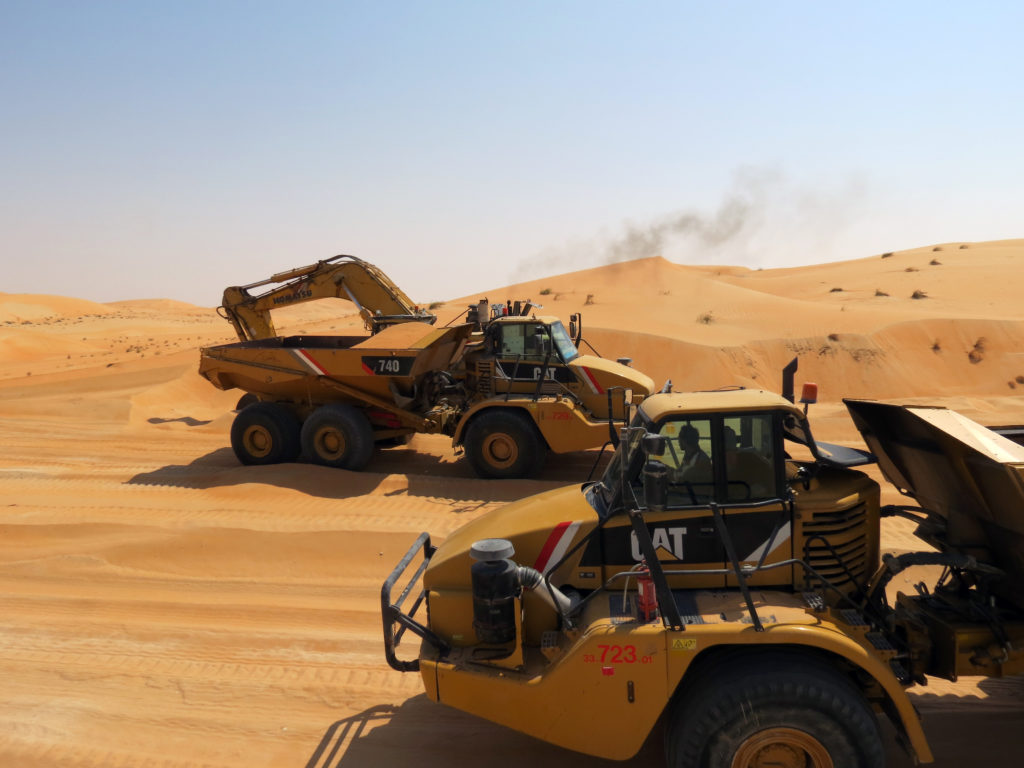
The United Arab Emirates track line known as Shah – Habshan – Ruwais is the first operating segment of the GCC Railway project (Gulf Cooperation Council Railway Network). It is a railway network system more than 2000 km long connecting all six Gulf Cooperation Council member states in the Persian Gulf (United Arab Emirates, Kuwait, Saudi Arabia, Bahrain, Qatar and Oman).
Sand Mitigation design and construction have been part of the contract signed in 2013 by the JV Saipem – Dodsal – Tecnimont with Etihad Rail for the construction of the railway track line Shah – Habshan – Ruwais in the United Arab Emirates desert.
Etihad Rail has required the design and the construction of systems to protect the railway track from the blowing sand. Sand Mitigation has to guarantee long-term track safety and ensure maintainability with light costs and easy activities.
Based on Etihad Rail requirements, the Sand Mitigation design developed for Saipem S.p.A. included:
♦ theoretical and scientific analysis of the railway track project (wind, soil, etc…)
♦ onsite instruments installation for the blowing sand study. Meteorological stations and 10 monitoring points have been positioned along the track line
♦ preliminary design concept of the Sand Mitigation solutions and computational validation through 2D and 3D CFD analyses
♦ onsite design validation of the Sand Mitigation solutions through field experimentation. In total 12 field trials have been set up for verifying the design and the efficiency requirements according to project specifications (safety and maintainability)
♦ Sand Mitigation solutions optimization based on construction and track line requirements
♦ validation of the constructed Sand Mitigation solutions through onsite observation, experimental data acquisition and analysis and GPR tests
The design and construction process has been developed for more than two years. Today it represents the only worldwide working Sand Mitigation solution based on a fully scientific approach (theoretical, numerical, experimental).


 Italiano
Italiano